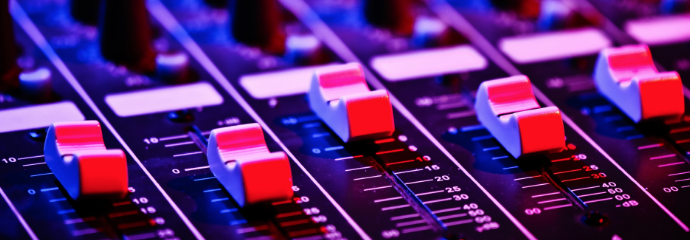 The cowbell is a percussion instrument that resembles the shape of a metal bell without a bell clapper. This instrument supposedly originated from the large metal bells hanging around the necks of cattle and other livestock. The cowbell still represents its humble beginnings, though one would be hard pressed to find a cow at a rock concert.
The cowbell is a percussion instrument that resembles the shape of a metal bell without a bell clapper. This instrument supposedly originated from the large metal bells hanging around the necks of cattle and other livestock. The cowbell still represents its humble beginnings, though one would be hard pressed to find a cow at a rock concert.
In most music settings, the drum set player attaches the cowbell to the high hat stand using a metal percussion clamp. In Latin percussion set ups, the cowbell may be attached to the timbales, a suspended cymbal, or even held in the hand, bell facing out. The instrument is struck loudly with a thick wooden stick near the edge of the bell. The percussion player avoids striking the end nearest the percussion clamp, as that end is slightly muffled.
The cowbell has a very distinct music sound that is difficult to disguise in a quieter music setting. This percussion instrument is most appropriately played in a loud rock or Latin music setting or in music passages that have the full music ensemble playing. The cowbell is rarely used in quiet music passages or any type of music that is considered calm and quiet.
Wil Ferrell Brings in MORE COWBELL in this Drum-Off
Another bell that is often used is the agogo bell. The agogo bell closely resembles the cowbell, except that it is at the least a double, or even triple, bell. Many times the agogo bells are slightly smaller than the cowbell, although there are traditional African bells, called gankogui, that are quite large and made of heavier metals. The agogo bells are often found in Latin music, world music, and traditional African music. They are also struck by a stick, but the agogo bells may be muffled against the leg for more intricate rhythmic patterns. Agogo bells are often more melodic, playing an important solo role throughout the music ensemble, and have a purer tone. The gankogui are much deeper and have a less pure tone, although they, too, play an important roll in keeping complex rhythmic patterns.
The agogo bells and cowbell are both found in the orchestra and traditional band material. In these cases, the instruments most often play the roll of accenting tutti passages, imitating cultural music references, keeping the beat, or sometimes playing a humorous role. Percussion technique is extremely simple when playing the cowbell, and only slightly more complicated for the agogo bell, making both percussion instruments easy to play by the young percussion player. The more complicated rhythms required of the agogo bell in Latin jazz settings requires more skill in complex rhythm, but are relatively easy to master.











Comments